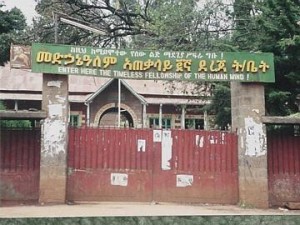Cold Hand of History, The Peace Corps, Part 3
Contrary to what the Peace Corps Evaluators wrote in their 1967 Evaluation of the Ethiopia project, that Wofford and the agency had “chosen the incorrect “institutional” answer-the secondary schools-to the problems of Ethiopia,” the Empire in 1962 had a serious “educational emergency,” which threatened to retard permanently its economic development.
According to Gary May, out of a secondary school-age population estimated at approximately one million, only six thousand were enrolled in 1960, and there were few college-trained Ethiopians qualified to teach them. This crisis had its origins during the Italian occupation (1935-1941), when the Italians killed nearly 20,000 Ethiopians, “reportedly concentrating on the professional, educational, and political leaders.” When Selassie returned to Ethiopia in 1941 he found “almost no educated people left in the country.” Over the next two-decades he attempted to fill this gap by importing teachers from abroad.
The Emperor considered education so important to the modernization of Ethiopia that he personally assumed the position of Minister of Education. The Peace Corps seemed ideally suited to assist Ethiopia in overcoming these problems.
Ethiopia’s need for teachers provided the Peace Corps with an opportunity to become an agency that was large in number and bold in purpose, May writes.
Then, and now, the Peace Corps Volunteers were college graduates who had majored in the liberal arts. Shriver and the founding fathers believed, (unlike Evaluators Bennett and Carroll,) that education was not only ‘good in itself’ but was the ‘key to progress and development.’
In October 1961, Selassie informed the Peace Corps that he would be interested in receiving as many as three hundred volunteers. In April 1962 Wofford negotiated the final agreement. Wofford was appointed Country Director to lead what would become “the largest Peace Corps contingent ever to come to any country at one time.” On July 8, 1962 the 340 of us Trainees for Ethiopia arrived at Georgetown University. Wofford would tell us, at the welcoming dinner, “The New Frontiers was not in Washington, they are out where you are going….”

Medhani Alem Secondary School Addis Ababa
This is What It Was All About, as I recall.
Within the larger African context, the post-World War II “winds of change” was resulting in successful anti-colonialist, nationalist, anti-apartheid, democratic, and modernist movements–in all four quadrants of the continent. In 1960, as I recall, 17 African countries gained their independence. Ethiopians who graduated from European and U.S. (or other) colleges and universities were interviewed by the Emperor upon their return to allow him to determine how best they could serve; and for security reasons. Many, including members of the military, became fervent supporters of “democracy” rather than monarchists.
Shrewdly, I think, Haile Selassie calculated that he must either initiate and attempt to control modernization efforts or find political, economic, and social changes forced upon him–as it was later through the “creeping coup.” An earlier coup attempt had failed. While the emperor had many supporters at home and many admirers abroad, he also had detractors, including those dread-locked Ethiopians who accused him of cutting and running to Bath, England, during the Italian invasion and administration (1936-41).
From a practical, economic standpoint, too, using Peace Corps and Indian teachers to quadruple the number of schools and students within a relatively short time made sense. Thus, as I recall, by the time we arrived in Ethiopia in Sept. 1965, there were 600 PCVs in country, the largest PC contingent in the world.
One of the great problems in Ethiopia was the sheer size of the Peace Corps. Dick Lipez and I evaluated the program before Maureen and Med and, while we supported education as a program, we were very troubled by the large number of schools with a dozen or more Peace Corps teachers. They seemed to overpower the school and the poor Ethiopian headmaster. It was not a healthy situation. In the end, a few years later, when students throughout the empire turned against the emperor and castigated the US for propping him up, the massive presence of the PCVs made them an easy target. Students began throwing rocks at the PCVs and beating them up. When the Emperor suppressed student dissent at the university with military force, Joe Murphy resigned as PC director, insisting the US should not be seen as a bulwark of Haile Selassie. Of course, the Peace Corps can be seen, through its influence on education, as a significant catalyst for the revolution against the emperor. But the final result was the horror of the Mengistu era. I devote a whole chapter to this in my history of PC..